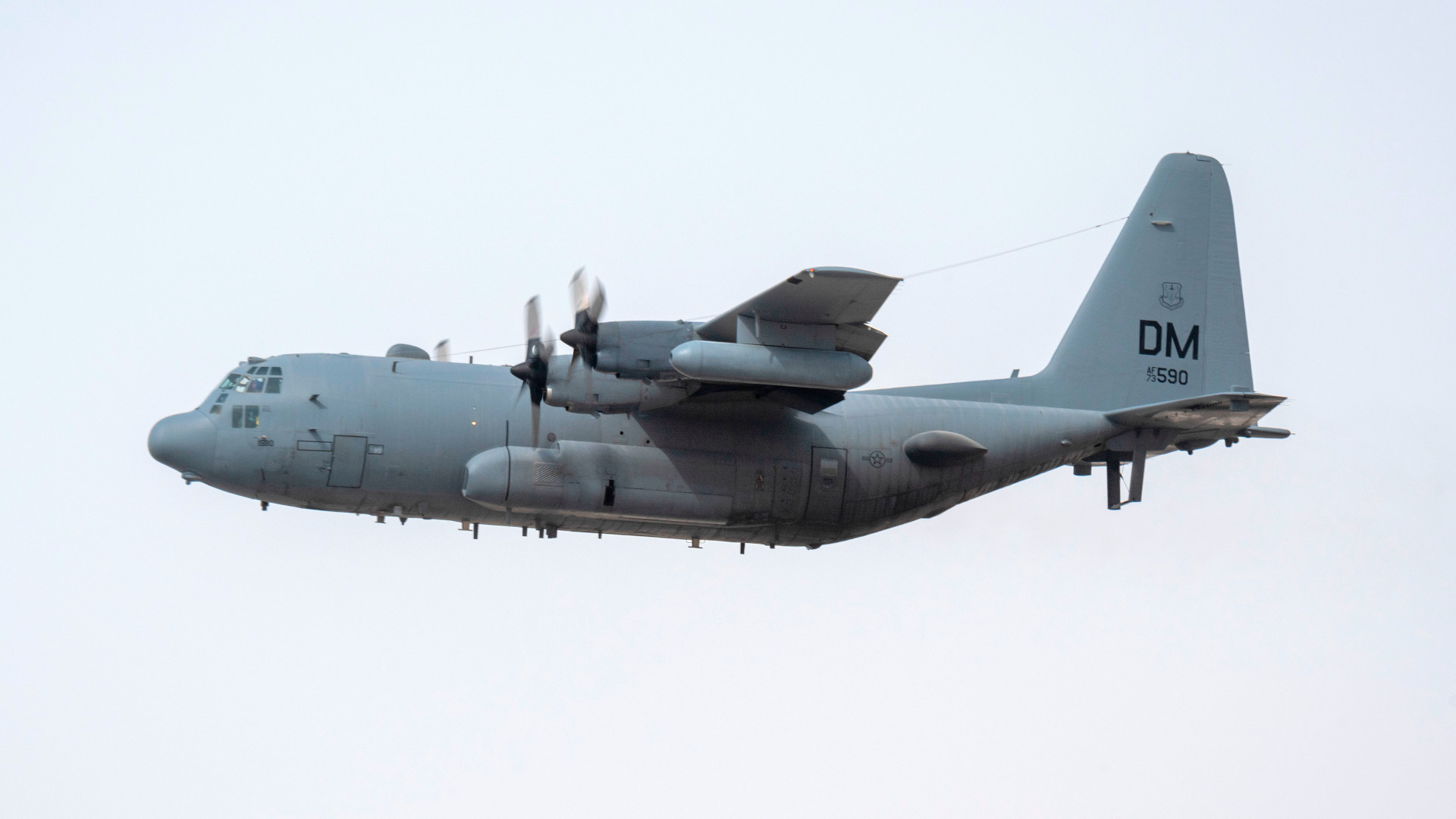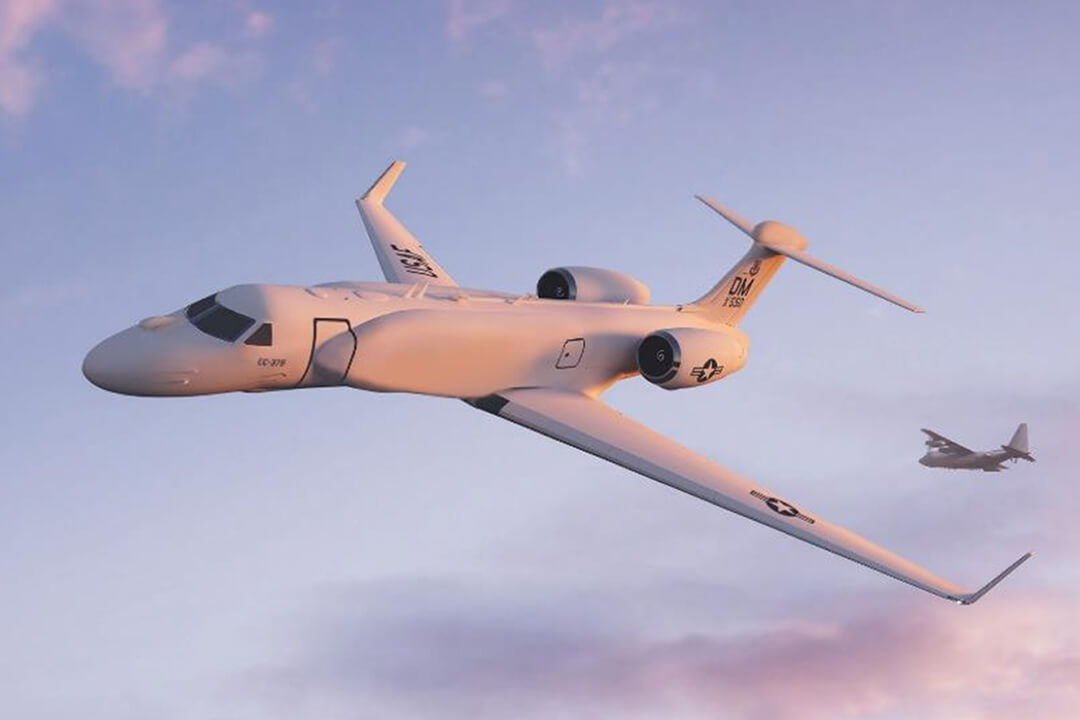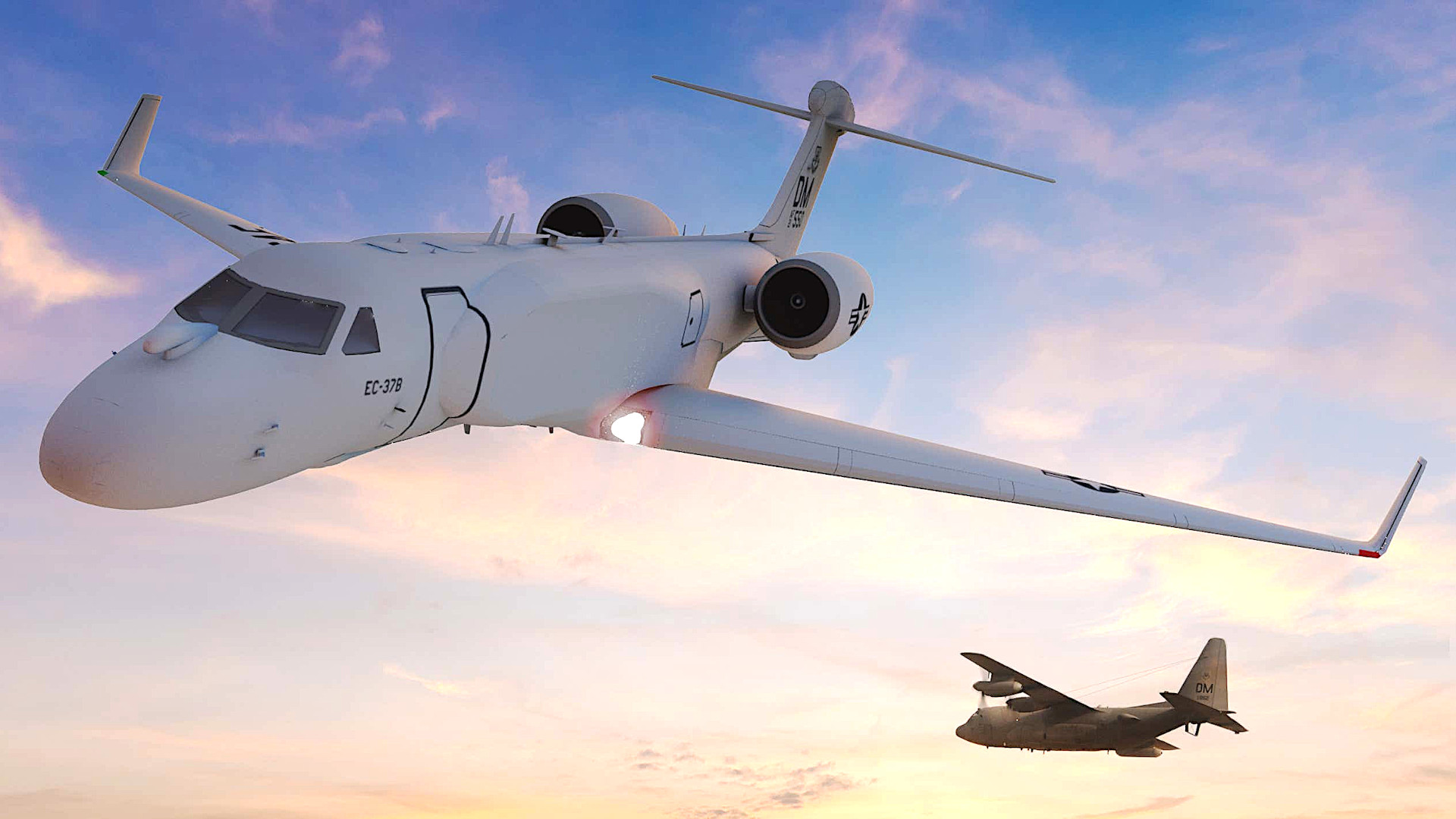The U.S. Air Force could be looking at an important boost to its future aerial electronic warfare capabilities after members of the U.S. House of Representatives moved to add $37 billion to the proposed defense budget for the 2023 Fiscal Year earlier today. This added spending plan includes $883.7 million to acquire four more EC-37B Compass Call electronic warfare jets, which would bring the planned fleet of these planes to 14. This would equate to a one-for-one replacement of the existing EC-130H Compass Call aircraft.
The House Armed Services Committee voted 42 to 17 today to include the proposed $37 billion spending package, which Maine Representative Jared Golden had put forward in an amendment, in a new draft of the annual policy bill, or National Defense Authorization Act (NDAA), for the 2023 Fiscal Year. You can read more about what else was contained in the Golden Amendment here.

At the time of writing, representatives are still discussing and voting on various other amendments to the proposed Fiscal Year 2023 NDAA, which then need to be formally voted on a whole before it can advance further in the legislative process. This bill would still then need to be reconciled with companion legislation being worked on in the Senate before it could be put to a full vote in Congress, and then, if passed, sent to President Joe Biden to be signed into law.
The Golden Amendment’s EC-37B-related funding is broken into two parts, $553.7 million for the four aircraft, which are highly modified Gulfstream G550 business jets, and $330 million for what is referred to as “A & B kits, spares, and installation.” This latter item refers to the integration of the Compass Call electronic warfare suite into the aircraft. As part of an effort to save costs, the conversion process for each EC-37B will involve “cross decking” elements of the complete Compass Call system from an existing EC-130H onto the new airframe.
The new G550-based Compass Call jets will offer advantages in speed, endurance, altitude, and ease of sustainment over the present fleet of aging C-130H-based aircraft now serving in this role. The new jets will also feature improved electronic warfare capabilities, including greater stand-off range, according to L3Harris, which is currently the platform integration provider for these conversions. BAE Systems is also involved in this program as the mission system integrator.
The Air Force, and the contractors behind the new EC-37B aircraft, have both argued in the past that these newer jets will be so superior to the EC-130H that the overall Compass Call fleet can safely shrink. “The G550’s superior reliability and sustainability mean that just 10 EC-37B aircraft provide equivalent EW [electronic warfare] capacity as the original high-demand 14 EC-130H aircraft fleet,” an L3Harris brochure says.

At the same time, if each EC-37B offers more operational capacity than an EC-130H simply because of their improved reliability and availability, then replacing every one of the existing Compass Call aircraft with a new jet can only expand the Air Force’s overall ability to provide electronic warfare support going forward. Compass Call, which has been upgraded successively over the years, provides critical stand-off jamming support — especially against communications systems — for U.S. forces. The system also has a limited secondary intelligence-gathering functionality based on its ability to spot, track, and geolocate various types of emitters, including radars and communications nodes.
Previous iterations of the EC-130H-based Compass Call system have proven their value in combat zones on multiple occasions in the past two decades. A contingent of these aircraft was continuously forward-deployed in the Middle East, from where they also supported operations in Afghanistan, between 2001 and 2021. EC-130Hs supported the raid that led to the death of Al Qaeda founder Osama Bin Laden in Pakistan in 2011 and prevented the detonation of an improvised explosive device that might have killed then-Maj. Gen. James Mattis, who later rose to the rank of General and also served as Secretary of Defense under Trump, in Iraq in 2003, among many other exploits, according to a recent story from Air Force Times.
The EC-37Bs, no matter how many of them the Air Force ultimately acquires, do look set to be an important component of what American forces will be able to bring to bear in this regard for years to come. They are, of course, just one layer of the overall and very diverse electronic warfare ecosystem within the U.S. military. The electronic warfare environment, both in terms of U.S. military capabilities and adversary threats, is also evolving.
With that in mind, it is interesting to note that this move by the House Armed Sevices Committee to expand the Air Force’s future Compass Call fleet follows the Senate Armed Services Committee advancing a plan in its latest NDAA draft that would require the Navy to retain 25 EA-18G Growler electronic warfare aircraft. In its Fiscal Year 2023 budget request, the Navy had outlined plans to put shutter the five squadrons to which those aircraft are presently assigned and put their jets in storage at the boneyard in Tucson, Arizona.
That Senate proposal would also direct the Navy to partner with the Air Force to establish a new reserve electronic warfare force, to support operations involving the EA-18Gs in question. You can read more about all of this here.
All told, the Golden Ammdent’s provisions regarding the EC-37B further indicate that members of Congress in the House and Senate are aware of the importance of electronic warfare and are looking to bolster the U.S. military’s capabilities in this regard.
Contact the author: joe@thedrive.com
